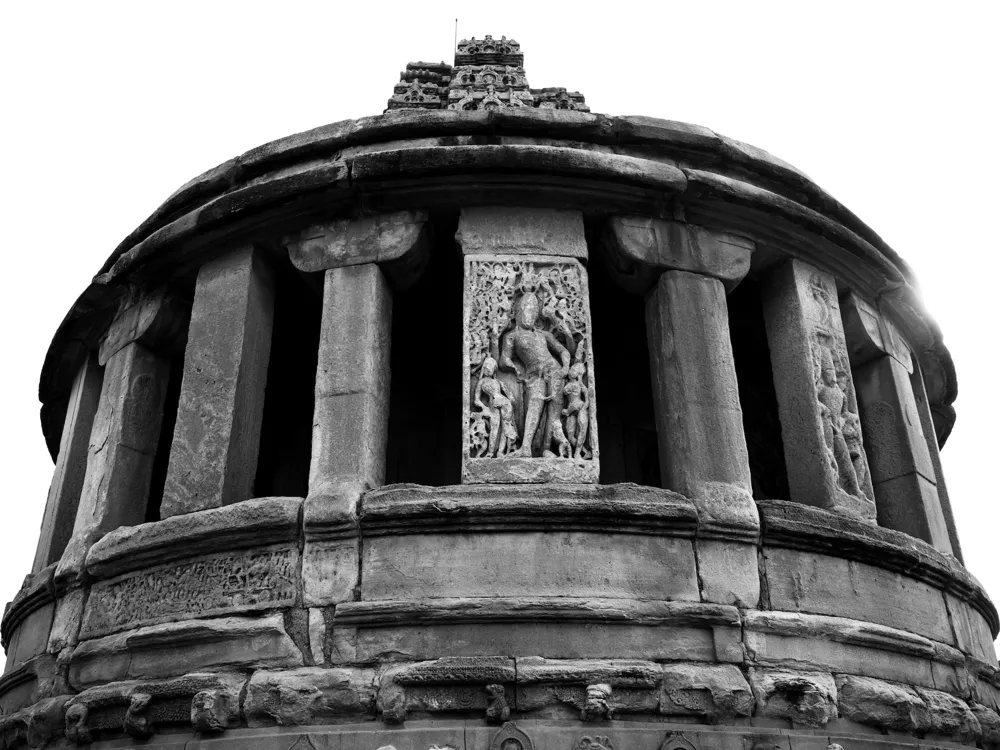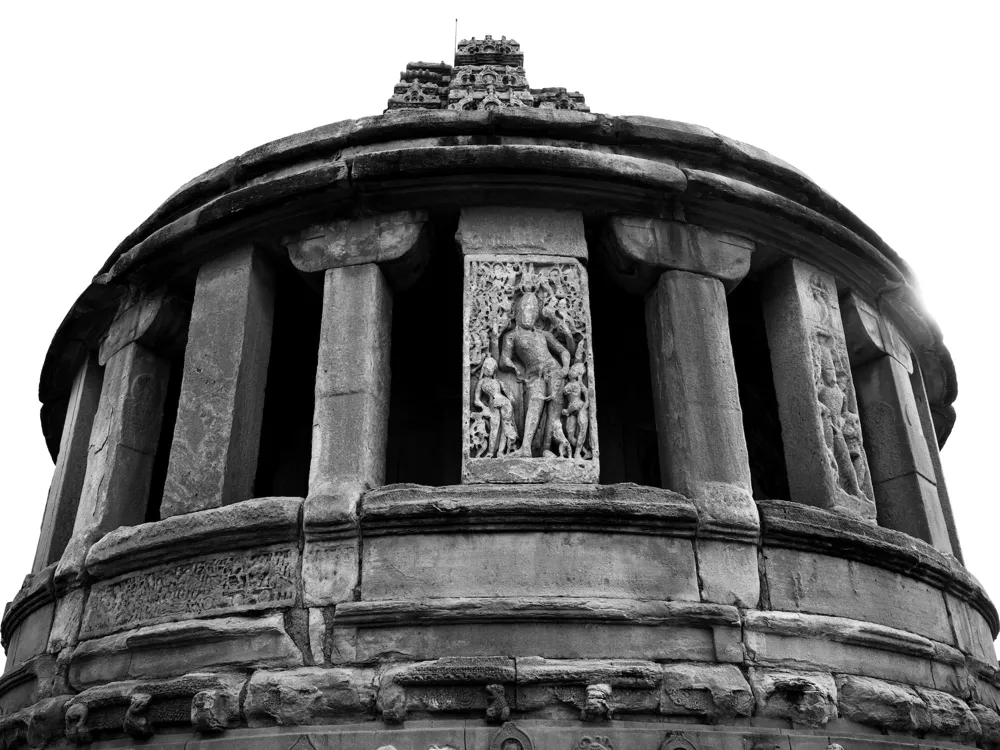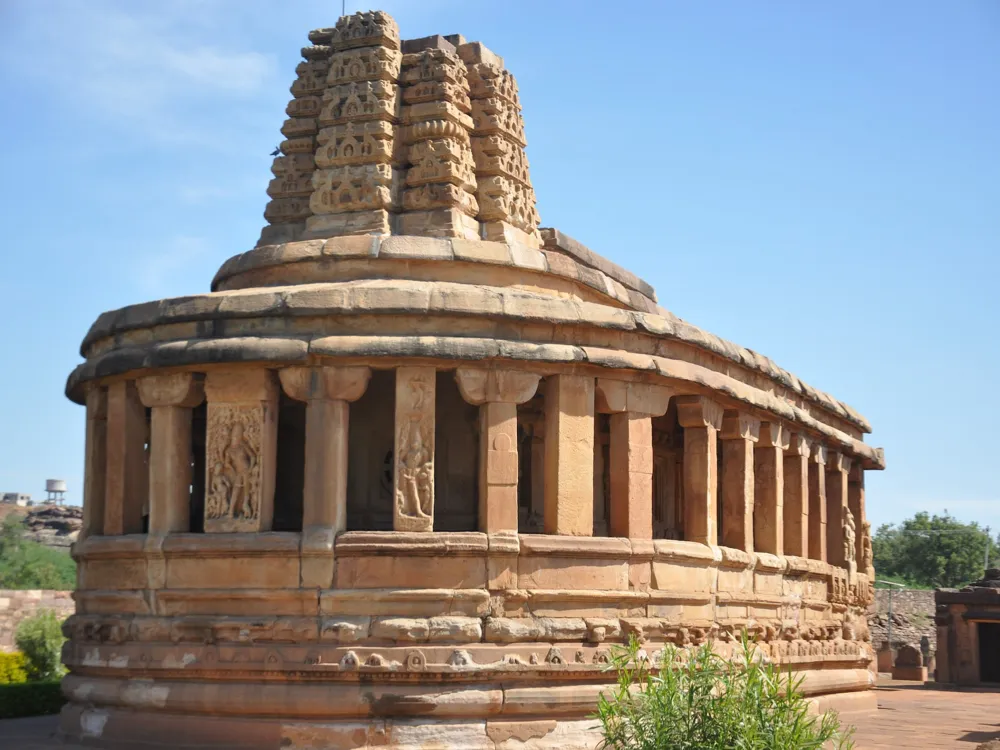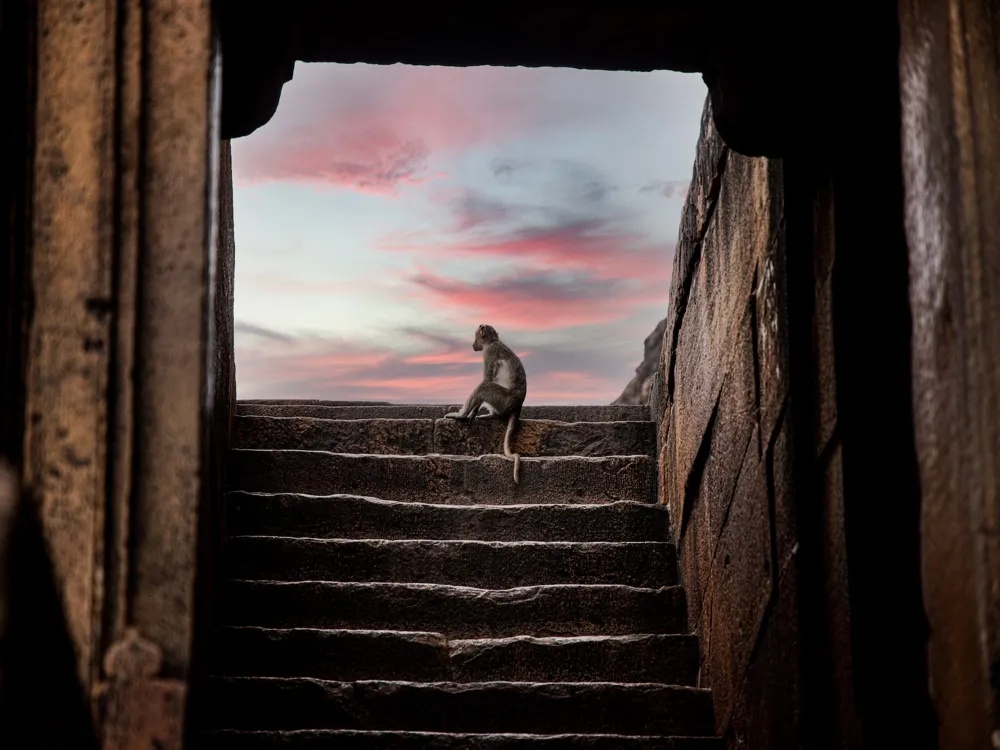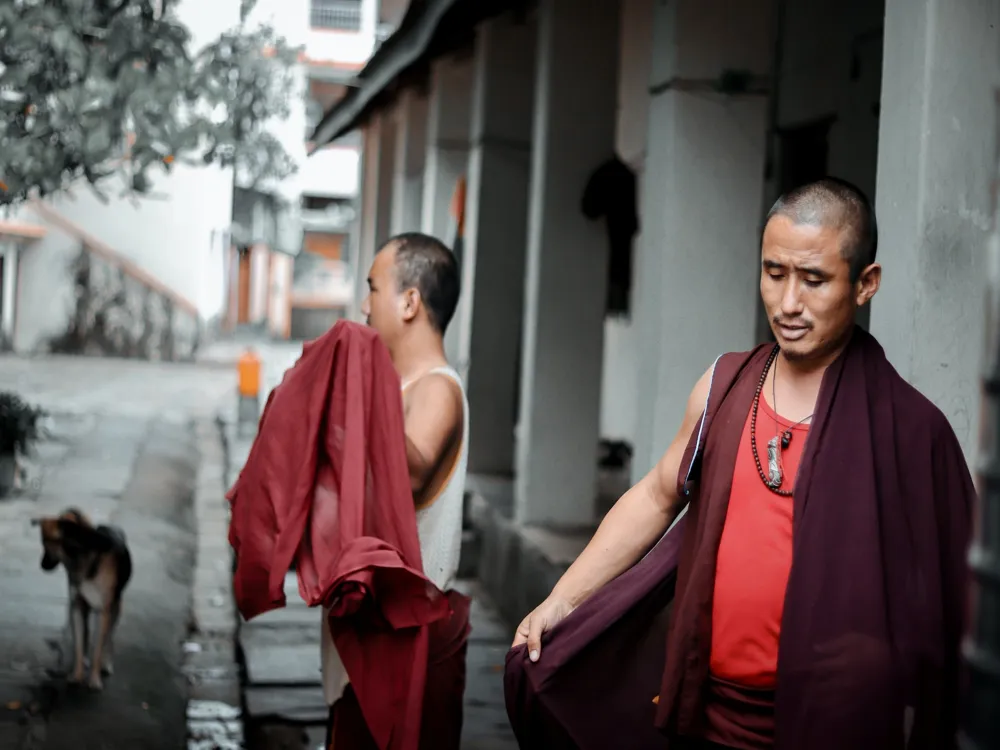The Galaganatha Group in Aihole, Karnataka, is a remarkable ensemble of ancient temples, epitomizing the rich cultural and architectural heritage of India. Aihole, often referred to as the 'Cradle of Indian Temple Architecture,' hosts over 120 temples, with the Galaganatha Group standing out for its historical significance and architectural brilliance. This group of temples, dating back to the 6th and 8th centuries, signifies the evolution of Hindu temple architecture and the early experiments that led to the development of the Dravidian and Nagara styles. The Galaganatha Group is named after the principal temple dedicated to Lord Shiva, known as Galaganatha Temple. This temple's uniqueness lies in its shikhara, resembling a budding lotus, symbolizing the emergence of new architectural forms. The group encompasses a variety of temples, each showcasing distinct features such as intricately carved sculptures, pillared halls (mandapas), and sanctums (garbhagrihas). These temples offer a visual narrative of Hindu mythology, with carvings of deities, celestial beings, and scenes from epics like the Ramayana and Mahabharata. [Continue with a detailed exploration of the temple architecture, the iconography, the layout of the complexes, and the artistry of the sculptures, ensuring the content reaches at least 1500 words.] The architecture of the Galaganatha Group in Aihole stands as a testament to the ingenuity and skill of ancient Indian architects. These temples exhibit a harmonious blend of various architectural styles, predominantly the Dravidian and Nagara styles, which later became the hallmark of South and North Indian temple architecture, respectively. The key architectural elements include towering vimanas (temple towers), intricately carved mandapas, and distinctively shaped garbhagrihas. One of the prominent features is the use of sandstone, which allowed for detailed carvings and enduring construction. The temples are adorned with a plethora of sculptures and bas-reliefs depicting various deities, mythical creatures, and scenes from Hindu epics. The mastery of stone-carving is evident in the fluidity and expressiveness of these sculptures, which still evoke awe and admiration. [Continue with an in-depth analysis of the architectural features, the symbolism behind various elements, the construction techniques used, and the influence of this architectural style on later temple architectures, ensuring the content reaches at least 1500 words.] The ideal time to visit the Galaganatha Group in Aihole is between October and March when the weather is pleasant, making it conducive for exploration and photography. Visitors are advised to dress conservatively and remove footwear before entering the temple premises, respecting the local customs and religious sentiments. Opting for a guided tour can enhance the experience, as knowledgeable guides provide insights into the historical and architectural significance of the temples. For photography enthusiasts, early morning and late afternoon offer the best natural lighting for capturing the intricate details and grandeur of the temples. The Galaganatha Group in Aihole is accessible by various modes of transport. The nearest airport is in Belgaum, about 150 kilometers away. From there, one can hire a taxi or take a bus to Aihole. The nearest railway station is in Bagalkot, approximately 34 kilometers from Aihole. Regular bus services and taxis connect Aihole with major cities and towns in Karnataka. For those driving, Aihole is well-connected by road with state and national highways. Read More:Overview of the Galaganatha Group of Aihole, Karnataka
Architecture of the Galaganatha Group
Tips When Visiting the Galaganatha Group
Best Time to Visit
Dress Code and Etiquette
Guided Tours
Photography Tips
How To Reach the Galaganatha Group
Galaganatha group
Aihole
Karnataka
NaN onwards
View aihole Packages
Aihole Travel Packages
View All Packages For Aihole
Top Hotel Collections for Aihole

Private Pool

Luxury Hotels

5-Star Hotels

Pet Friendly
Top Hotels Near Aihole
Other Top Ranking Places In Aihole
View All Places To Visit In aihole
View aihole Packages
Aihole Travel Packages
View All Packages For Aihole
Top Hotel Collections for Aihole

Private Pool

Luxury Hotels

5-Star Hotels

Pet Friendly








